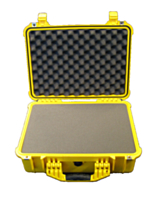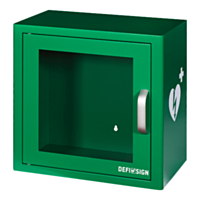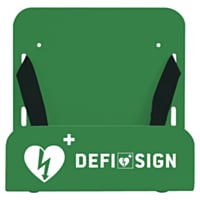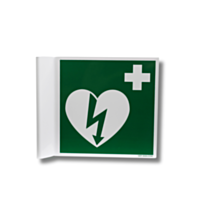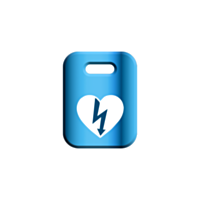Defibrillators for the Maritime Sector
In the maritime sector, where quick access to help can save lives, a defibrillator is indispensable. Whether for marine, offshore or recreational, a defibrillator provides extra security in emergency situations. The devices on this page are ideal for ships and ideally suited for inland and maritime navigation.
The unique conditions on a ship have been taken into account during the selection of these defibrillators, including water resistance, multilingual support, user-friendliness and easy maintenance. In addition, these defibrillators include all specifications to withstand the challenging conditions at sea, such as moisture and vibration.
Would you like to request a quote for a maritime defibrillator? Fill in the form at the bottom of the page and receive a quick response.


Why a defibrillator on board is indispensable
At sea, it can take hours for medical help to arrive. In the case of cardiac arrest, every second counts: without rapid resuscitation and defibrillation, the chance of survival decreases by 10% per minute. It is therefore crucial that crew members can act immediately. A defibrillator analyses the heart rhythm and, if necessary, administers an electric shock to restart the heart. This buys precious time until professional medical help is available.
Recommended defibrillators
Discover our extensive range of defibrillators, perfectly tailored to the maritime sector. The models below are available as semi-automatic or fully automatic versions. They have a high IP rating and are available in English and several other languages. At the bottom of this page, you can request a quote for a maritime defibrillator directly.
What does a maritime defibrillator need to meet?
Not every AED is suitable for the hash conditions at sea. A maritime defibrillator must meet certain requirements, such as:
- High water and dust resistance: A high IP rating (preferably IP55 or higher) ensures protection against moisture and dust.
- Robustness: Due to exposure to harsh weather conditions and ship movements, the defibrillator must be able to withstand shock and vibration.
- Simple operation and clear instructions: In emergency situations, the AED should be intuitive to use, even by those without medical experience. An AED with both spoken and visual instructions in multiple languages is ideal for international crews.
These specifications make the following defibrillators ideally suited for use on a ship:

Mindray Beneheart C1A
- Long electrode and battery life (low maintenance costs)
- Ideal for long-distance vessels
- With child button, so no separate child electrodes required

ZOLL AED Plus
- CPR feedback via depth and frequency of cardiac massage
- Long electrode and battery life (low maintenance costs)
- Pictograms with LED lights for clear assistance during CPR
- Sturdy housing

Defibtech Lifeline
- High-resolution LCD display with colour video instructions
- Bilingual options
- Portable and lightweight
- Easy upgrade with data card or USB connection
Storage and accessories for marine defibrillators
To keep your AED in good condition, it is important to store it in a dry and well-ventilated place, preferably in a secure cabinet or suitable case. Defibrillators function best within a specific temperature range. Extreme cold or heat can affect battery performance and damage the electrodes. Therefore, store the defibrillator in an easily accessible but temperature-controlled location on board.
For stationary installations on land, outdoor cabinets with heating and ventilation help regulate temperature fluctuations. On ships, this is more challenging, so it is advisable to store the defibrillator away from direct sunlight and areas prone to frost, for example, in a controlled indoor space that remains accessible in emergencies.
Clear signage is also essential, ensuring the crew can quickly locate the defibrillator on board.
Maintenance for defibrillators on ships
Besides buying a suitable defibrillator device and defibrillator accessories, regular maintenance is essential. To keep your defibrillator in good condition, it is important to:
- Regularly check the status indicator of the AED.
- Have spare batteries and electrodes on board.
- Have an annual inspection to ensure reliability, for example with Medisol's One-Time Maintenance.
Also download our (free) Maritime defibrillator checklist as a handy tool to check weekly or monthly whether your AED is still in good condition.
Defibrillator quote request
A defibrillator on board a ship is essential. It can save lives in situations where medical help is not readily available. Invest in a reliable AED and make your ship safer for everyone on board.
Request a no-obligation quote today and receive expert advice tailored to your needs.
Frequently asked questions

